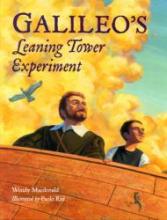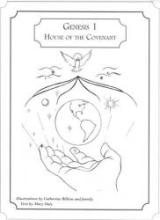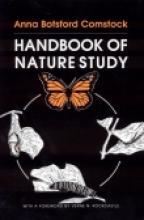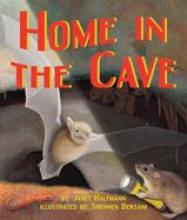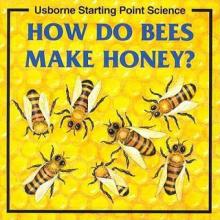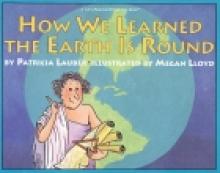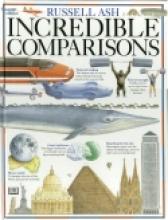Science Elementary
Galileo's Leaning Tower Experiment
Science readers are to be found if you look around enough as this book demonstrates. It is the fictional story of Massimo, a boy who regularly throws his uncle's lunch off a bridge to his boat as his uncle rows by below. Galileo happens to see that the bread and the cheese land at the same time. The story ends atop the leaning Tower of Pisa, as legend suggests Galileo did.
The illustrations are a little disappointing, the people in particular. The story is sometimes forced as math and science readers often are; however, overall it is a great tale that teaches a basic principle of physics sure to have your children dropping objects from heights. It even alludes to Galileo's ramp experiments on acceleration. The last page briefly fills in the reader on the period in history, what in the story is fact and fiction, and the formula for calculating speed.
Overall this is a great introductory physics science book.
Galileo's Leaning Tower Experiment
Additional review: World Geography, World History, science... and some creative fictional characters as well! All in a beautiful information Picture Book.
The story of the legendary Leaning Tower of Pisa experiment by Galileo is brought to life here around the story of a boy, Massimo, who was very clever, and dropped his father's lunch from a bridge everyday in calculating motions... until a passer-by professor named Galileo witnesses it and rethinks the whole Aristotelian notion on the subject!
The pictures are colorful, warm and very pleasant, and some of the angles are taken from delightful perspectives!
A gem. A very nice way to introduce children to Galileo and to some concepts of Physics.
Genesis 1: House of the Covenant
8.75x12" heavy paper, suitable for pencils, markers, or crayons
Nihil Obstat
Good Night, Little Sea Otter
Handbook of Nature Study
This is a very informative handbook on a large portion of nature, originally written for elementary school teachers. It covers wildlife, insects, farm animals, birds, fish, trees, flowers, weeds, vegetables, rocks, minerals, soil, climate, weather, magnets, the sun, moon, planets of our solar system and much more. According to the 1986 foreword, most of the living things described are common in the northeastern states of the U.S. but it covers a lot of material that would be helpful in other parts of the country as well. I've hardly begun to use this resource, but it looks like an excellent reference for all of those questions children want to know about the world around them. It can also be used as a teaching tool and studied more systematically as there are simple lessons designed to be used with children included with each subject. As the lessons are designed to work with real observation of the plants, they are particularly appropriate for a home school. The book is profusely illustrated with black and white photos. I would guess that there's an average of two photos per page. The language is a little archaic and some of the words would be a little difficult for younger children.
Copyrights 1911/1939
Home in the Cave
How Do Bees Make Honey?
A small, inexpensive book filled with pictures and lots of other information picture about bees and other insects. You'll learn how to tell bees apart from other insects, how bees live together in colonies and all about their beehives, how bees communicate with each other (my children have really enjoyed trying to re-enact the bee's dances) and of course how bees make honey. The one thing I didn't like is that the material is so disjointed because it jumps around between different kinds of insects.
How We Learned the Earth is Round
A history and science picture book that covers the development of man's understanding of the shape of the earth focusing on the discoveries of the Greeks and on the voyages of Christopher Columbus and Magellan. Currently out-of-print
Incredible Comparisons
This picture book designed for "big kids" gives side-by-side comparisons according to length, height, area, life-span, speed, etc. of all kinds of things - animals, mountains, countries, modes of transportation, man-made structures and much more.
Segments of the book include: "On the Surface" (compares land-size of various countries, islands, different uses of land), "Into the Earth" (canyon depths, cave lengths and depths, etc.), "Going into Space" (compares power and speeds of rockets vs. airplanes, comet tail size comparison with various planets, etc.), "The Solar System" (compares planet sizes and distances, etc.), "Great Lengths" (compares lenghts of airplanes, highways, major rivers, telecommunications cables, etc.). Other chapters cover animal speeds, ladn and water speeds, human population etc. Does include some environmental and politically correct content. The segment on human population was much better than I expected. To give a sampling.... "A population explosion has seen the number of people in the world more than triple since 1900 - from less than 2,000,000,000 to close to 6,000,000,000. Each day, enough people to fill the largest stadium in the modern world are added to the total. Thankfully, the world is a very big place. All the people in the world today could actually fit, standing shoulder to shoulder, on the small Indonesian island of Bali."

